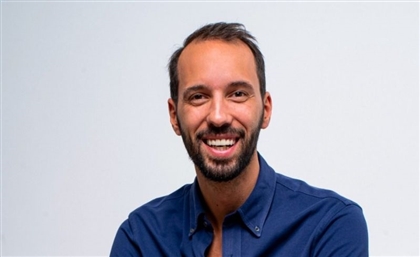Five Trends VCs are Predicting for the Second Half of 2023
Where are VCs looking to allocate their money? Here are five trends that VCs predict for H2’23.

If the first six months of 2023 are any indicator, the investment outlook could continue to be murky for the remainder of the year. With high interest rates, inflation, and geopolitical tensions still present today, market conditions are forecasted to remain slow in the Middle East and beyond.
While funding in Q1 2023 reached a total of $818 million compared to $846 million last year during the same period, it is worth noting that 67% of the region’s total funding came from three megadeals: Egypt’s Halan, KSA’s Floward and Nana, according to Magnitt’s Q1 2023 MENA Venture Investment Report.
“Elements and factors that got us where we are today are still very much in place,” Wael Amin, Partner at Sawari Ventures, tells StartupScene. “Interest rates are still high and getting higher, the macroeconomic challenges and geopolitical tensions are still present, supply chain problems are still there, and inflation is still on the rise. All these factors wouldn’t suggest that the conditions are about to change.”
But it’s not all bad news. Investments are still being made in startups, and VCs still have funding to deploy, albeit more cautiously. So, where are they looking to allocate their money? Here are five trends that VCs predict for H2’23.
EARLY-STAGE STARTUPS TO ATTRACT MORE CAPITAL
With economic conditions impacting late-stage startups, particularly when it comes to valuations, Mohamed Hussein, Senior Investment Associate at Acasia Ventures, expects early-stage startups to become more attractive for investors.

“From a funding perspective, it appears that early stage startups were the least impacted through last year's downturn, compared to late stage and growth stage startups. Thich is also reflected in the valuations,” Hussein says. “We’re seeing valuations shrinking, especially the later you get, towards Series A and beyond. We’re seeing flat rounds and down rounds, which is not necessarily a bad reflection on the underlying fundamentals of companies, but rather gives you an indication of the overall macro picture and fundraising environment.”
As a result, Acasia Ventures is paying more attention to early-stage startups, especially those that are growing sustainably, generating profit, and expanding their margins.
FINTECH AND LOGISTICS STARTUPS STILL INVESTIBLE
Fintech and logistics were the most funded sectors in 2022, each recording $2.256 million and $1.417 million respectively, according to Magnitt. Although these sectors have been growing substantially in the last few years in MENA, they are still expected to attract more funding this year and in the coming period.

“With changes happening towards open banking regulation, and with increased focus on financial inclusion and access to financial services, we see fintech continuing to be a critical and important sector in the Middle East and Africa,” says Said Murad, Partner at Global Ventures.
Indeed, open banking regulations have been picking up steam in the region with Bahrain launching its open banking framework in 2020, Saudi Arabia establishing an open banking lab last year, and the Dubai Financial Services Authority (DFSA) granting its first open banking license this earlier year.
Meanwhile, logistics was ranked as the second most funded sector after fintech. Investors still see real potential for innovation in this space, particularly when it comes to focusing on digital, decentralized and sustainable solutions. This may be especially relevant in countries with limited logistic and transportation alternatives.
“There are still huge pain points in the logistics industry across Africa,” adds Hussain from Acasia Ventures.“In Egypt, we're already seeing several startups demonstrating success in the logistics sector, especially when it comes to last mile delivery. But if you look at the rest of Africa, there is definitely more opportunity for growth there.”
APPETITE FOR CLEANTECH AND AGRITECH WILL INCREASE

Cleantech is also emerging as an attractive sector for VCs. According to data by the World Bank, total investment in the climate and cleantech sectors is expected to reach $6.4 trillion by 2023.
Despite the sector being nascent in the region, it is expected to grow as the Middle East becomes more energy efficient and sustainable. “If we don’t do these investments today, when are we going to do it?” says Amin from Sawari Ventures. “Cleantech is a good bet for the coming ten years, not only this year.”
In addition to cleantech, agritech is also making headway. Last year, investments in this space increased by 83% to reach $286 million, according to Magnitt. With food security challenges becoming critical in the region, investors are increasingly relying on startups to make farming more efficient and less expensive.
ECONOMICALLY SUSTAINABLE STARTUPS ARE VALUED
Regardless of sector, startups that are profitable and economically sustainable are the ones that will most likely attract investments.
Having solid fundamentals, a proven business model, and being cash efficient are all key elements that investors look for. “If we look back historically, some of the strongest tech companies globally were born in down markets,” says Murad from Global Ventures. “So, it’s very important to maintain that even if there is a slowdown in terms of funding on an aggregate basis, it doesn’t mean that the strong founders of those companies that are being built sustainably in the right way, are not getting funded.”
Murad advises founders to be cash efficient and to spend money wisely, particularly in today’s challenging times. “Make sure every dollar you’re spending is bringing you the right ROI and is helping you grow your business in a sustainable way, yielding and lending itself to positive unit economics.”
MORE FUNDING ALTERNATIVES
Approaching VCs may be the most common fundraising route for startups, but it’s certainly not the only one. Venture debt is increasingly becoming a popular financing option for founders.
This type of financing typically involves lenders providing liquidity to early-stage startups between equity funding rounds, but unlike traditional debt financing they usually take on higher returns for taking on higher risks.
Amin from Sawari Ventures is cautious about this type of lending. He advises startups to focus on generating profit and revenue before seeking venture debt. “Startups should be working on their business model, cash flow cycle, changing their pricing, and spending less on acquisition to plug the financing gap in their company,” Amin says. “The loan may ease the financial burden, but if a startup is spending more than it’s making, then the loan is pushing them further down in debt.”
Besides venture debt, Hussein from Acasia Ventures adds that family offices and investment holding companies may also be good options for startups, particularly if they’re looking for more stable growth. “Not every startup fits the profile that venture capitalists look for,” Hussein says. “The venture capitalist mindset is very clear, and its exponential growth, although with sustainability a key factor. Some founders of companies want steady, stable growth that generates stable and predictable recurring cash flow over the long term. There is nothing wrong with that, but in that case, venture funding may not always be applicable or attractive for them. Other sources of financing may be more appropriate instead.”
Trending This Month
-
Dec 28, 2025






















